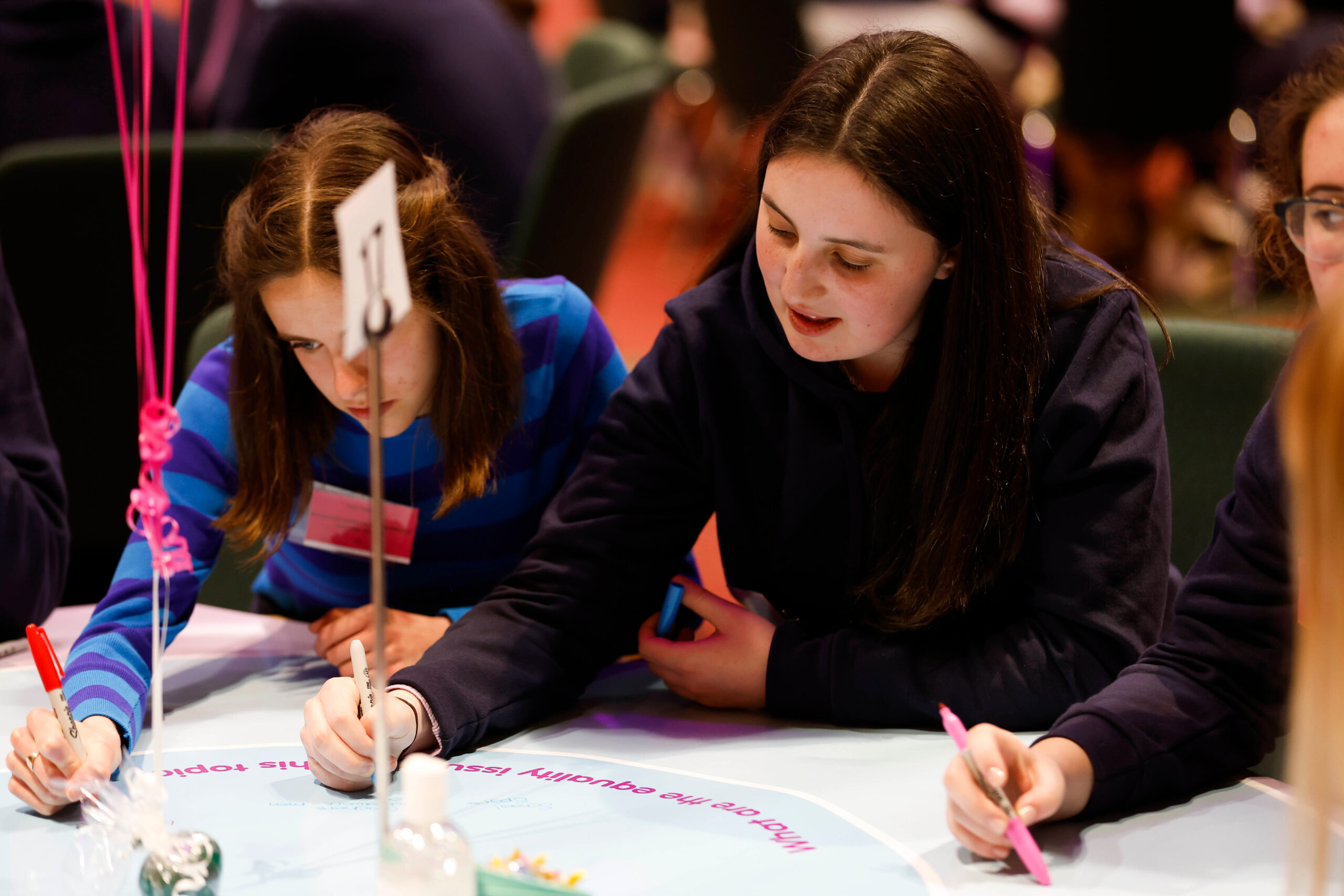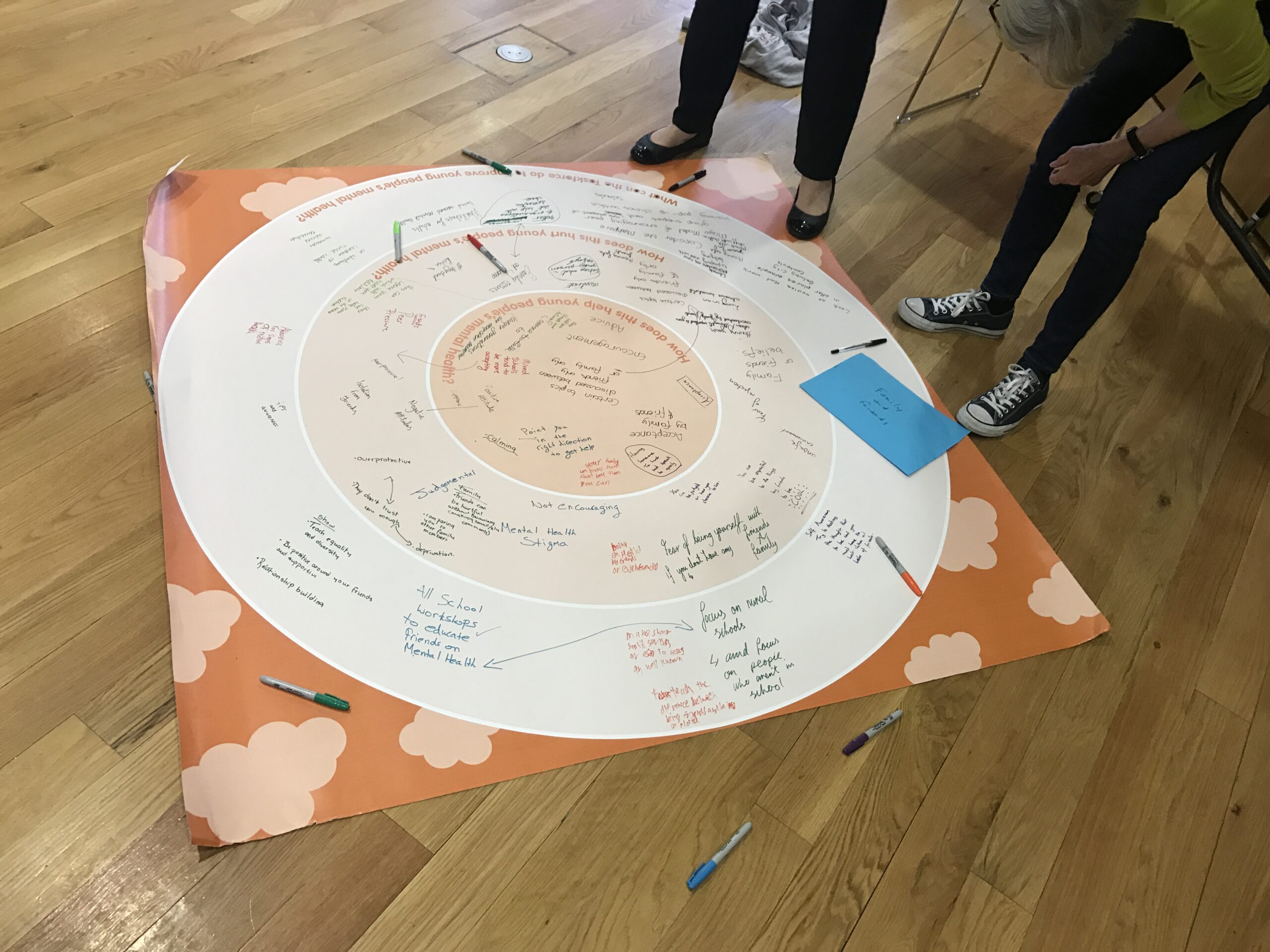What is Hub na nÓg?
Hub na nÓg is the national centre of excellence on giving children and young people a voice in decision-making.
What is Hub na nÓg
Hub na nÓg is a national centre of excellence and coordination on giving children and young people a voice in decision-making.
We support government departments, state agencies, public service and non-government organisations to give children and young people a voice in decision-making, with a particular focus on those that are seldom-heard.
Hub na nÓg developed the National Framework for the Participation of Children and Young People in Decision-Making in collaboration with Professor Laura Lundy (Queens University), which informs our practice in this area.
Hub na nÓg has a particular remit to support the voice of seldom-heard children and young people in decision-making.


How does Hub na nÓg work??
Leadership of Hub na nÓg comes from within the Department of Children, Equality, Disability, Integration, and Youth.
We work with policy makers, practitioners and organisations, publishing guidelines, good practice case studies, developing and innovating methodologies, and providing training on how to more effectively listen to and act on the voices of children and young people.
We provide leadership and develop methodologies for consultation and participation initiatives. We have a particular focus on conducting complex and targeted consultations with seldom-heard children.
Hub na nÓg’s services are developed and delivered using a strategic approach. All support is planned, implemented and evaluated to inform the development of good practice models of training, coaching and consultation methodology.
Participation with Purpose
The overarching principles of good participation are informed by the UNCRC
Children and young people must be provided with full, accessible, diversity-sensitive and age-appropriate information. They must be told about their right to express their views freely, their right to have their views given due weight, and how their participation will take place: its scope, purpose, and potential impact.
Children and young people should never be coerced into expressing their
views against their wishes and should be informed that they can stop participating at any stage.
Children and young people should be provided with opportunities to initiate ideas and activities, and their views should be treated with respect. Adults also need to understand the socioeconomic, environmental and cultural context of their lives.
The issues on which children and young people are asked to express their views must be of real relevance to their lives, enabling them to draw on their knowledge, skills and abilities. They should also be asked to address issues they themselves identify as relevant and important.
All environments and working methods should be adapted to children and young people’s capacities. Resources must be available to ensure that they are adequately prepared and given the necessary confidence and opportunity to contribute their views. Different levels of support and forms of involvement (according to age and evolving ability) are needed.
Participation must be inclusive, avoid patterns of discrimination, and ensure opportunities for marginalised children. Consideration must be given to ensuring that children enjoy equal access to the digital environments necessary for online participation. Children and young people are not a homogenous group – it is essential that equal opportunity is provided for all individuals within that group, so that all voices are heard. Every effort should be made to ensure that programmes are culturally sensitive and free from discrimination.
Adults need preparation and support to facilitate children and young people’s participation. This includes listening, effective cooperation and knowing how to engage with their evolving capacities.
In certain situations, expressing their views may put children and young people at risk. Adults must take every precaution to minimise the risk of violence, exploitation or any other negative consequence of participating. This includes the development of a clear child protection strategy, which recognises the particular risks faced by some groups and the extra barriers they encounter. It should also pay particular consideration to the risks in the digital environment if children are participating online.

Participation Framework
Supporting implementation of the National Framework for the Participation of Children and Young People in Decision-making.
Key outputs: The Framework gives guidance on implementing participation with purpose by explaining:
- What participation is and what it is not
- How to involve children and young people in decision-making
- How to ensure the involvement of seldom-heard children and young people in decision-making
- How to follow-up and give feedback to children and young people
- How to be realistic with children and young people